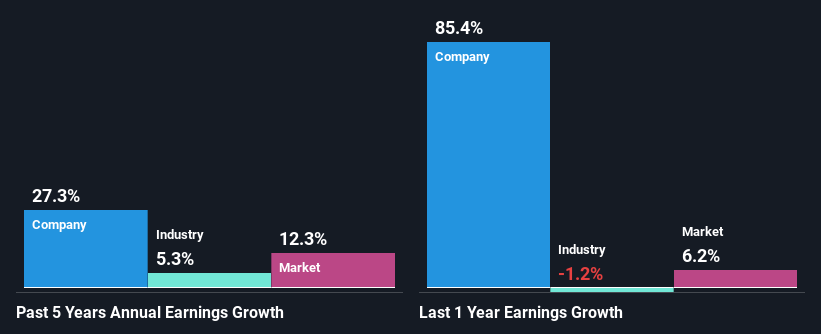Rural Funds Group's (ASX:RFF) Stock Has Fared Decently: Is the Market Following Strong Financials?
Rural Funds Group's (ASX:RFF) stock is up by 5.1% over the past three months. Given that the market rewards strong financials in the long-term, we wonder if that is the case in this instance. In this article, we decided to focus on Rural Funds Group's ROE.
Return on Equity or ROE is a test of how effectively a company is growing its value and managing investors’ money. Put another way, it reveals the company's success at turning shareholder investments into profits.
See our latest analysis for Rural Funds Group
How Is ROE Calculated?
The formula for ROE is:
Return on Equity = Net Profit (from continuing operations) ÷ Shareholders' Equity
So, based on the above formula, the ROE for Rural Funds Group is:
13% = AU$79m ÷ AU$600m (Based on the trailing twelve months to December 2020).
The 'return' is the income the business earned over the last year. So, this means that for every A$1 of its shareholder's investments, the company generates a profit of A$0.13.
Why Is ROE Important For Earnings Growth?
So far, we've learned that ROE is a measure of a company's profitability. We now need to evaluate how much profit the company reinvests or "retains" for future growth which then gives us an idea about the growth potential of the company. Assuming everything else remains unchanged, the higher the ROE and profit retention, the higher the growth rate of a company compared to companies that don't necessarily bear these characteristics.
Rural Funds Group's Earnings Growth And 13% ROE
At first glance, Rural Funds Group seems to have a decent ROE. Especially when compared to the industry average of 6.7% the company's ROE looks pretty impressive. This certainly adds some context to Rural Funds Group's exceptional 27% net income growth seen over the past five years. However, there could also be other causes behind this growth. For instance, the company has a low payout ratio or is being managed efficiently.
Next, on comparing with the industry net income growth, we found that Rural Funds Group's growth is quite high when compared to the industry average growth of 5.3% in the same period, which is great to see.
Earnings growth is an important metric to consider when valuing a stock. It’s important for an investor to know whether the market has priced in the company's expected earnings growth (or decline). Doing so will help them establish if the stock's future looks promising or ominous. Is RFF fairly valued? This infographic on the company's intrinsic value has everything you need to know.
Is Rural Funds Group Making Efficient Use Of Its Profits?
Rural Funds Group seems to be paying out most of its income as dividends judging by its three-year median payout ratio of 79%, meaning the company retains only 21% of its income. However, this is typical for REITs as they are often required by law to distribute most of their earnings. Despite this, the company's earnings have grown significantly as we saw above.
Moreover, Rural Funds Group is determined to keep sharing its profits with shareholders which we infer from its long history of seven years of paying a dividend. Upon studying the latest analysts' consensus data, we found that the company's future payout ratio is expected to rise to 97% over the next three years. Therefore, the expected rise in the payout ratio explains why the company's ROE is expected to decline to 7.3% over the same period.
Conclusion
On the whole, we feel that Rural Funds Group's performance has been quite good. In particular, its high ROE is quite noteworthy and also the probable explanation behind its considerable earnings growth. Yet, the company is retaining a small portion of its profits. Which means that the company has been able to grow its earnings in spite of it, so that's not too bad. Having said that, on studying current analyst estimates, we were concerned to see that while the company has grown its earnings in the past, analysts expect its earnings to shrink in the future. To know more about the company's future earnings growth forecasts take a look at this free report on analyst forecasts for the company to find out more.
This article by Simply Wall St is general in nature. It does not constitute a recommendation to buy or sell any stock, and does not take account of your objectives, or your financial situation. We aim to bring you long-term focused analysis driven by fundamental data. Note that our analysis may not factor in the latest price-sensitive company announcements or qualitative material. Simply Wall St has no position in any stocks mentioned.
Have feedback on this article? Concerned about the content? Get in touch with us directly. Alternatively, email editorial-team (at) simplywallst.com.

 Yahoo Finance
Yahoo Finance 
